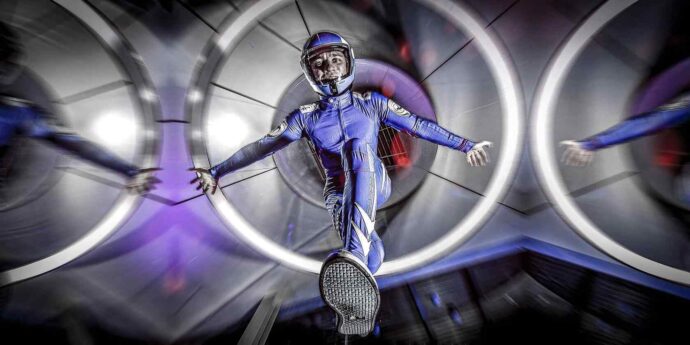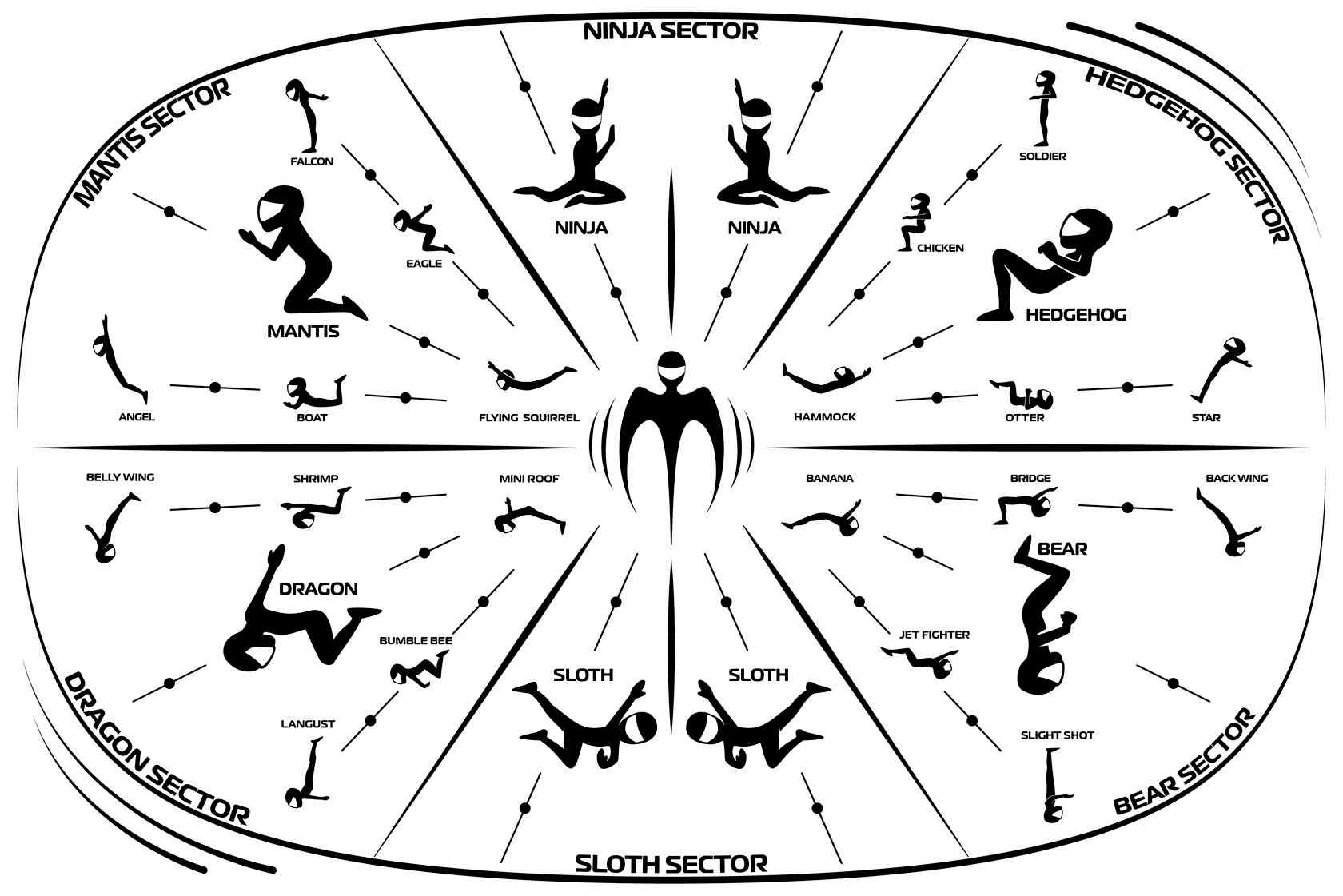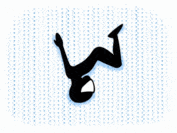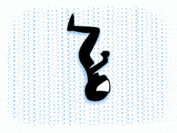Technical Information
Meet the Mind Behind the Encyclopedia of Bodyflight
“TunnelSport,” designed and curated by Leonid Volkov, is the world’s largest compendium of bodyflight positions.

[the_ad_placement id=”article-above-content-mobile-only”]
Leonid Volkov, of St. Petersburg, Russia, is a passionate indoor skydiver and has been flying in wind tunnels for over a decade now. He’s so passionate, in fact, that he quit skydiving outside entirely in 2015, after notching 150 jumps, to focus full-time on bodyflight inside.
When I asked him how much time he’d spent in a wind tunnel, he laughed.
“Only the God of the Wind knows this information,” he said, chuckling. “But it’s a lot.”
The Ultimate Bodyflight Database
Volkov is the mind behind TunnelSport, the world’s largest compendium of bodyflight positions, home to nearly 150 positions. It houses detailed graphics on bodyflight theory, short videos of bodyflight transitions, terms and definitions, and in-depth “coaching” videos for flyers to learn new moves and tricks.
The coolest aspect of TunnelSport, however, is its bodyflight positions table. This table categorizes approximately 145 positions into six “sectors” based on how the body is exposed to airflow in each position. These six sectors are Dragon, Mantis, Ninja, Hedgehog, Bear, and Sloth, and each contains dozens of positional variants, such as Baboon, Athlete, Ace, and Bull, all of which are variants in the Mantis sector.

BodyFlight Position Sectors
(Images provided by tunnelsport.com)
DRAGON: the front of the body is exposed to the airflow, the lines of the head and the torso are directed downwards.

MANTIS: the front of the body is exposed to the airflow, the lines of the head and the torso are directed upwards.

NINJA: the lateral side of the body is exposed to the airflow, the lines of the head and the torso are directed upwards.

HEDGEHOG: the back of the body is exposed to the airflow, the lines of the head and the torso are directed upwards.

BEAR: the back of the body is exposed to the airflow, the lines of the head and the torso are directed downwards.

SLOTH: the lateral side of the body is exposed to the airflow, the lines of the head and the torso are directed downwards.

This exhaustive list of positions has been developed and categorized by Volkov, with input and contributions from many other famed international flyers, such as Singaporean champion Kyra Poh who crafted the exotic “ScorpiKyra” position.
It’s impressive that Volkov has developed in the sport as much as he has, considering the fact that in his home of St. Petersburg, there is only one true (4.3 m/14 ft recirculating) wind tunnel, FlyStation, which has been open since 2012.
He acknowledged that the resources for beginner flyers are slim, with many countries only having a single tunnel, or none at all, and a small community, if any. This is precisely why he created TunnelSport. He wanted to create a database for new flyers to learn and grow in the sport. “I remember when I first started, I was hungry for any information I could find,” he said. “Now, with TunnelSport, I want to post and share my knowledge for others.”
Love at First Flight
For Volkov, it didn’t take two or three or four flights to fall in love. It was love at first flight.
“When I started to fly, I couldn’t stop,” Volkov said, “because I just loved it so much. Immediately. First flight.” He paused. “Really, I loved it even before trying. I loved it when I just saw the wind tunnel pictures,” he admitted, laughing.
Though he took to the sport immediately, he trained day in and out, and developed quickly, eventually becoming arguably the strongest indoor flyer in Russia, if not the world, for a time. The 33-year-old Volkov won gold in Freestyle Open in the 2nd FAI World Championships back in 2017, and silver the previous year.
However, he said that although he’ll probably attend this year’s World Championships in Belgium (where the USA’s first all-female international team will compete, alongside hundreds of other fliers from around the world, including several hotshot Singaporeans) it will be only as a coach, as he has a student from Hungary participating.
He began naming positions as a function of coaching, to have a way to describe and organize the various positions in which his students were learning to fly. His favorite bodyflight positions to date, by far, he said, are those in the Dragon sector. “I like a lot of positions, but I love Dragon,” he said, “as well as Ninja and Mantis, and Bumblebee [a Dragon variant].” It’s clearly hard for him to choose, as he punctuates any specifics by reiterating that “all positions are wonderful. All positions I love.”
For newer flyers, he recommends transitioning out of the beginner positions Flying Squirrel and Belly Neutral into the Bumblebee position. This Dragon-sector move positions the wind “mostly to the front part of the body,” with belly down, knees bent, arms pointing down and wrists curving up.
Positions that are good for beginners like the Bumblebee, Volkov said, is that it allows you to fly in low wind speeds. Harder positions, like the Dragon sector positions, are only able to be flown in higher levels of wind.

The Future of Flying
Despite the physical accessibility of indoor skydiving, the future of the industry, Volkov believes, is limited by the sport’s financial barriers to entry.
Trying indoor skydiving might be cheap to try, but continuously practicing one’s skills isn’t.
“It’s expensive. Of course, sports like football or hockey are more popular because more people can do this for much less money. People look at the price for two minutes of wind and they go, ‘What the hell!’ We have to lower the price for the wind,” he said, “but it needs to be much, much lower [for the sport to be more financially accessible]. We have to make it easier and cheaper to train extensively, not just do short flights once or twice and be done.”
This is limited, he admits, by the price of electricity. “I hope the sport will grow because I work in this industry, but I do not know,” he said. It may be hard to predict where the cost of electricity and other resources will go in the coming years, but there are ways around the high costs.
For Volkov, working as an instructor was a viable way to overcome the barriers of financial inaccessibility. As an instructor, he could fly for free and had plenty of spare time to train his skills on the side. This, he said, is his biggest tip for new flyers.
“Find a way to fly for cheap, and fly as much as possible. You will improve.”
All the costs aside, the sport is growing rapidly, even in Russia. A whopping 153 flyers competed in the recent Russian Nationals. The three first-place flyers from this competition are going on to Belgium in April for the FAI World Cup.
Published: January 31, 2022 | Last Updated: January 31, 2022
Don’t miss an update!
Join our mailing list for the latest indoor skydiving updates delivered directly to your inbox.
"*" indicates required fields

